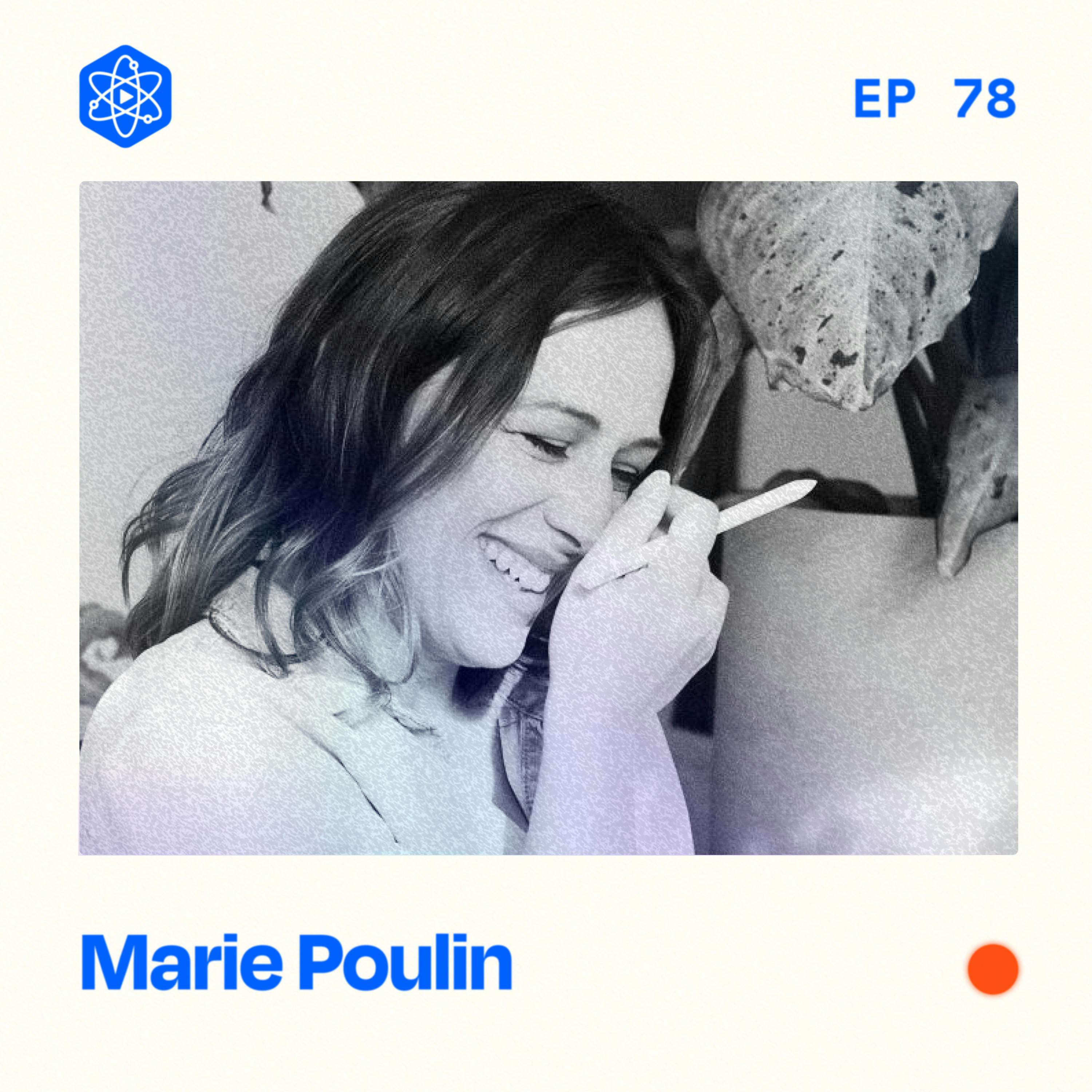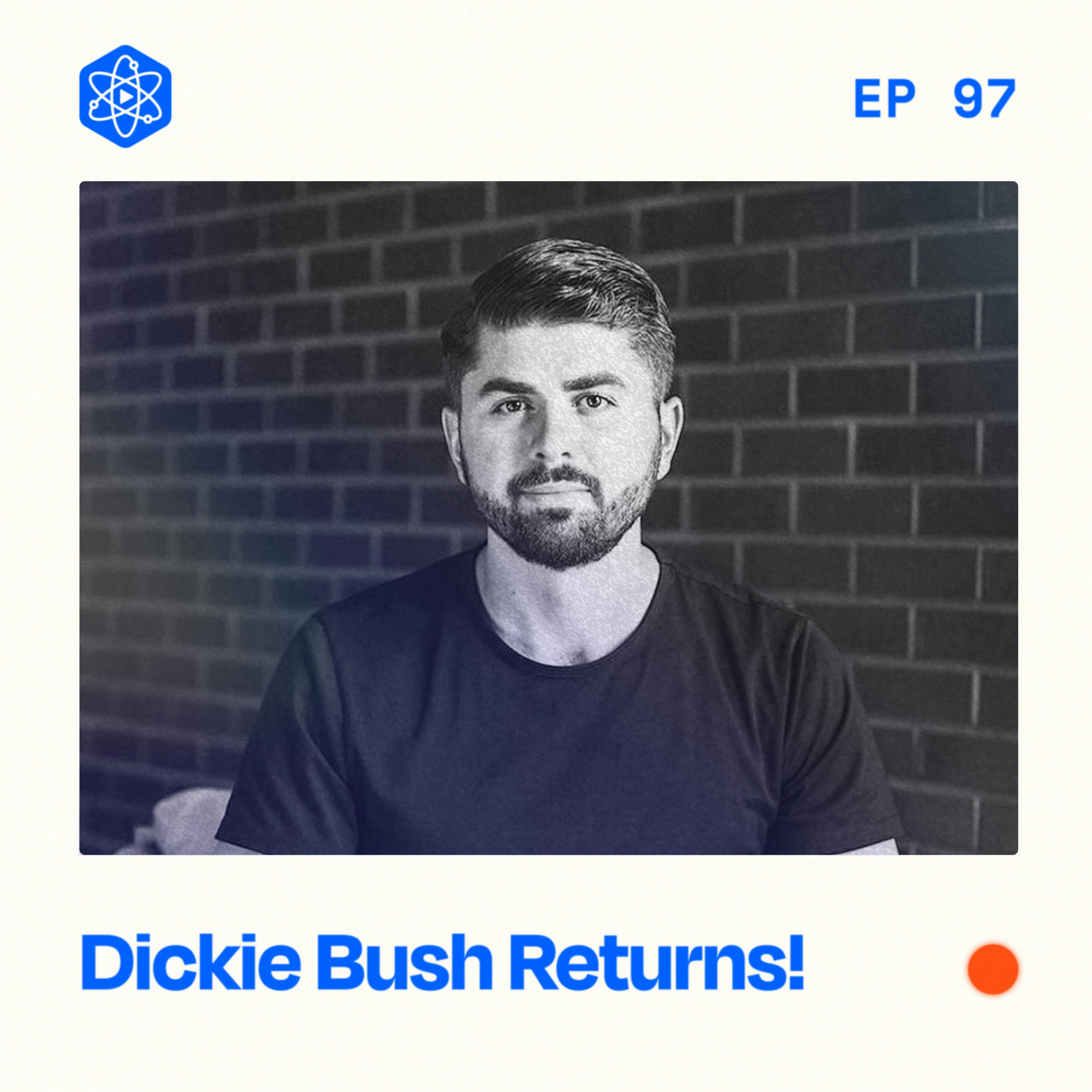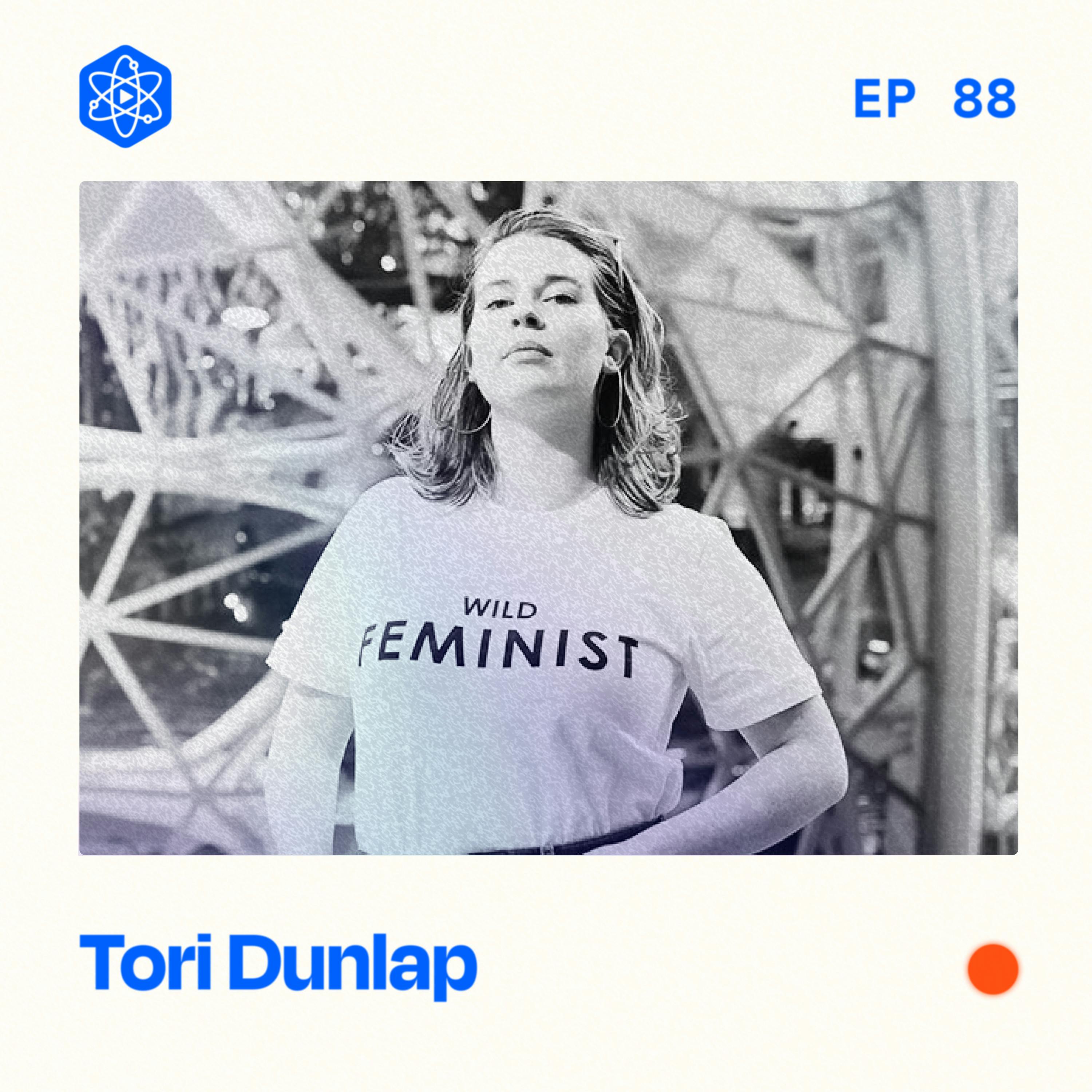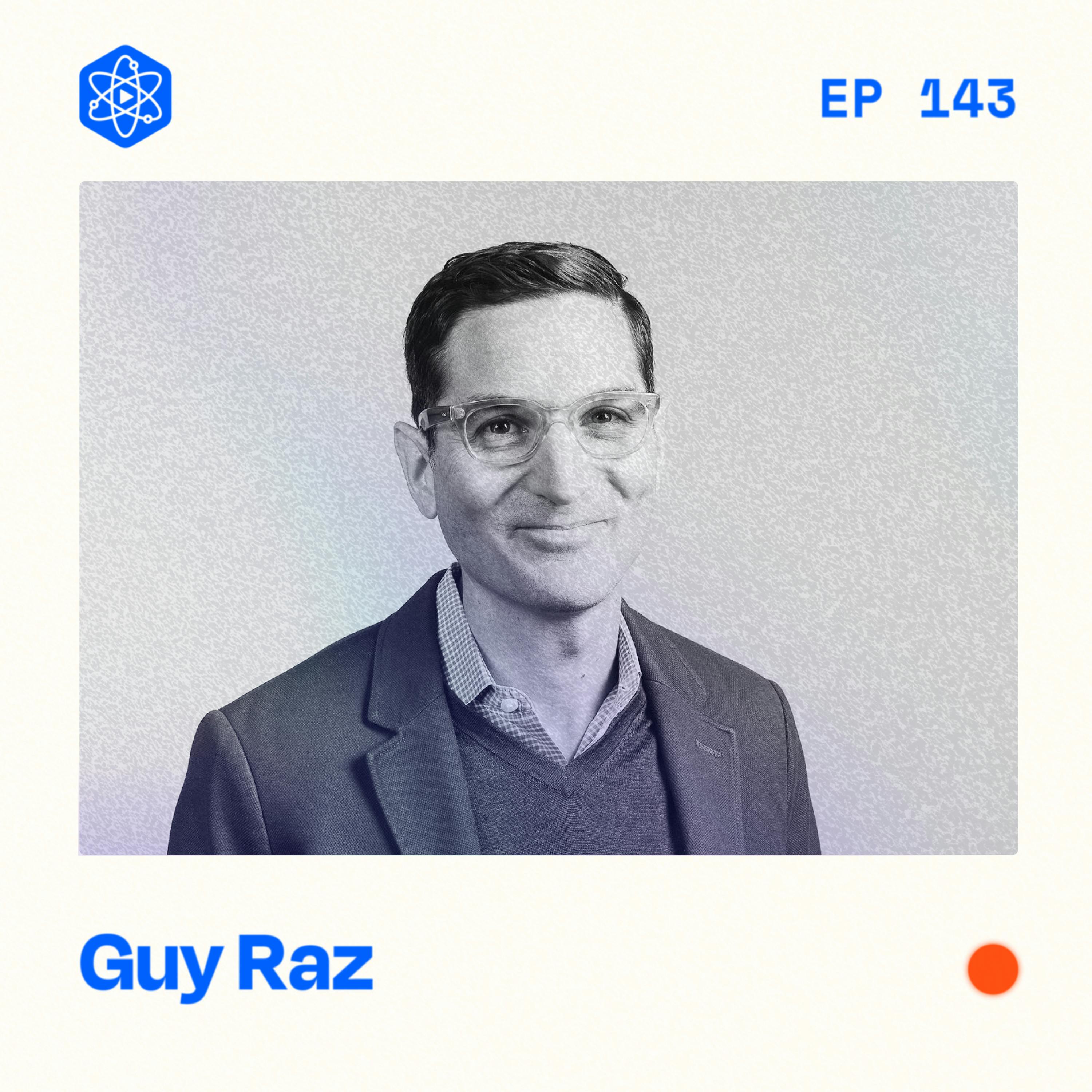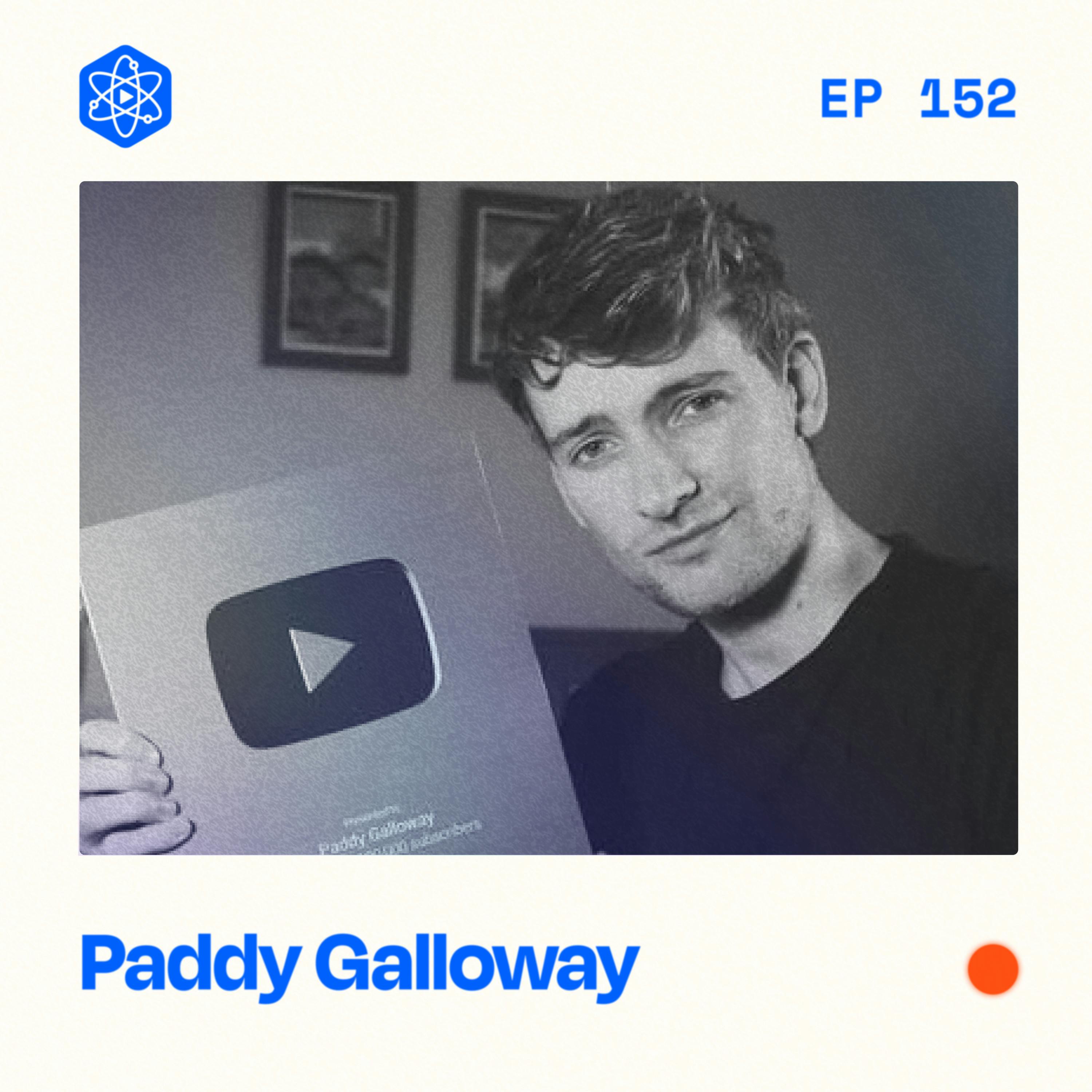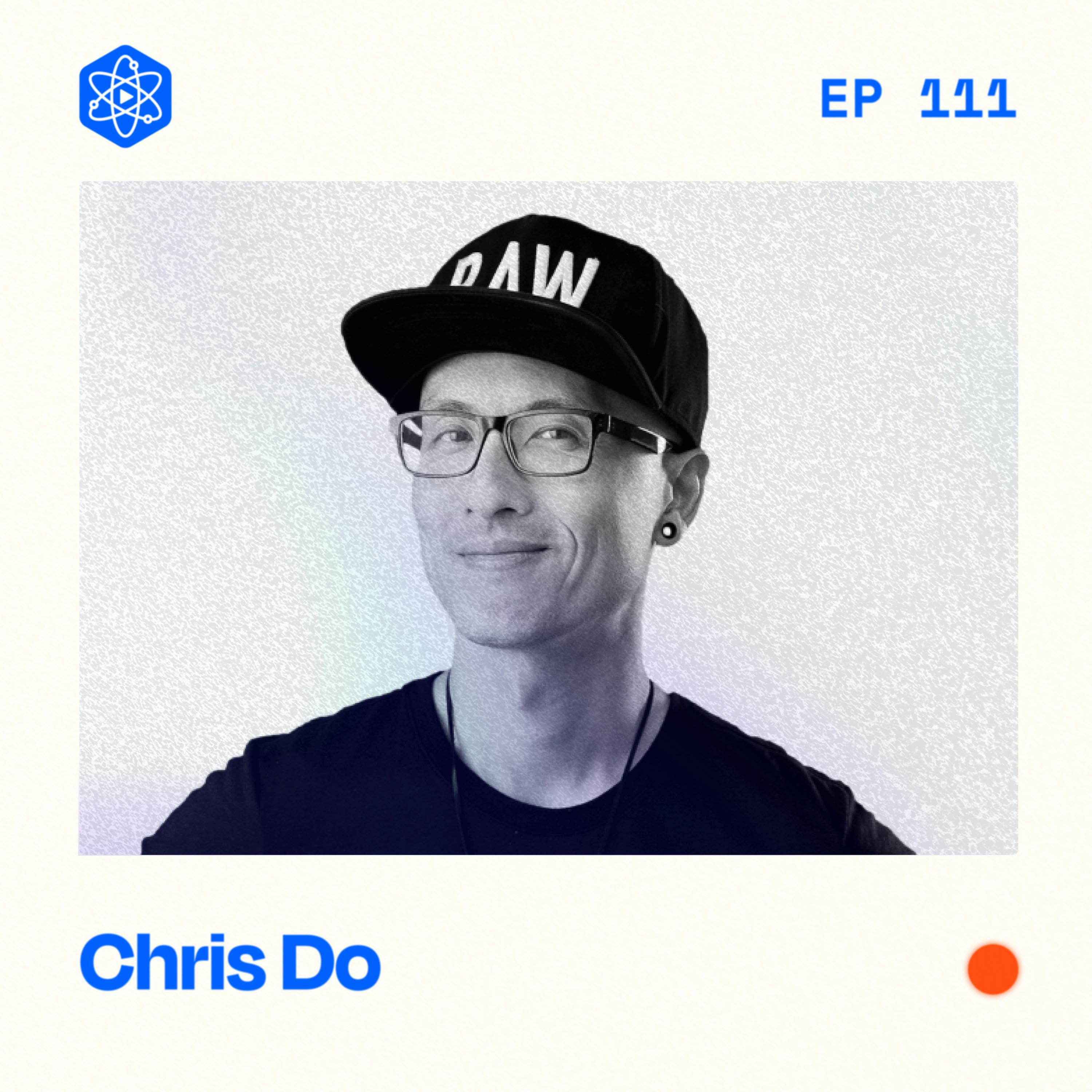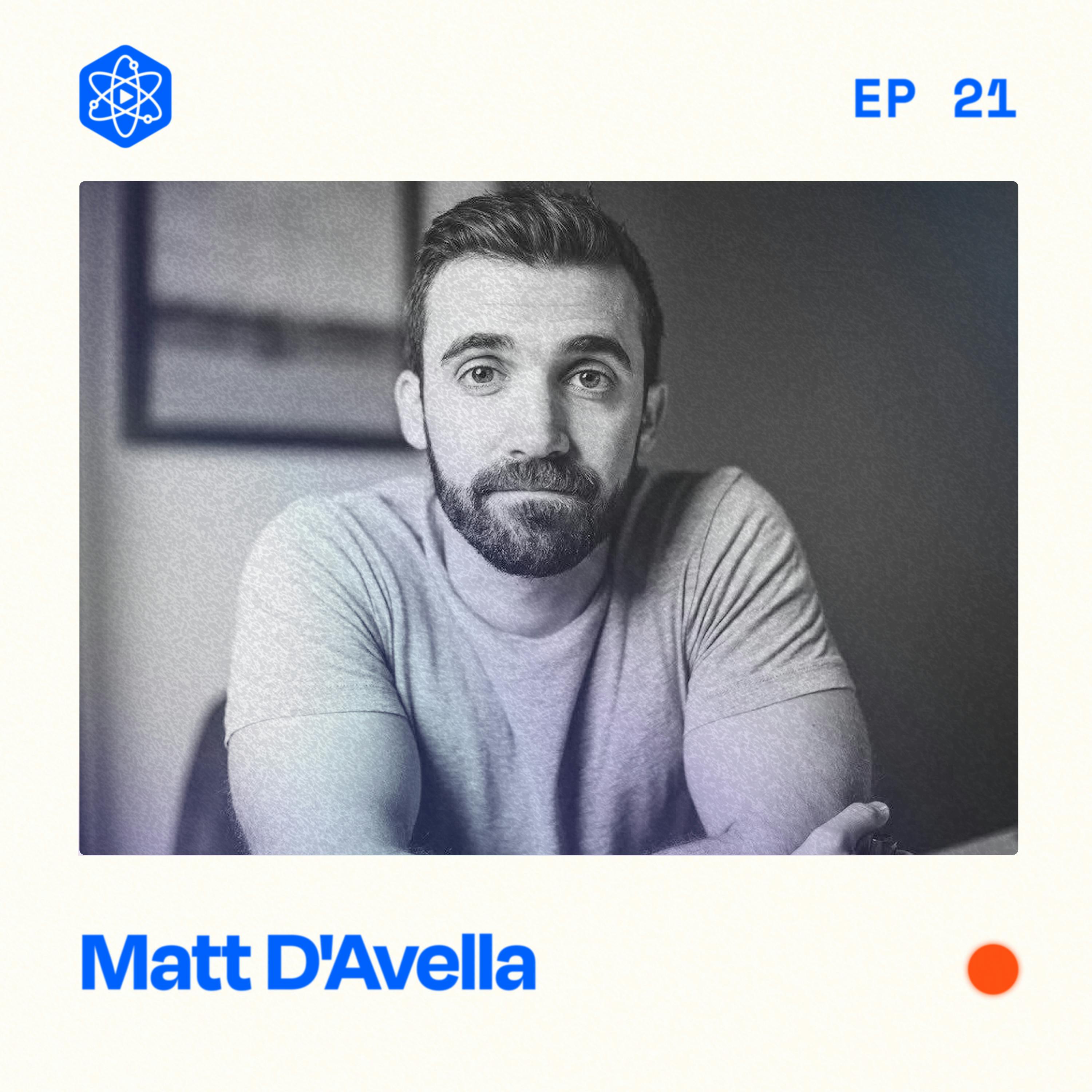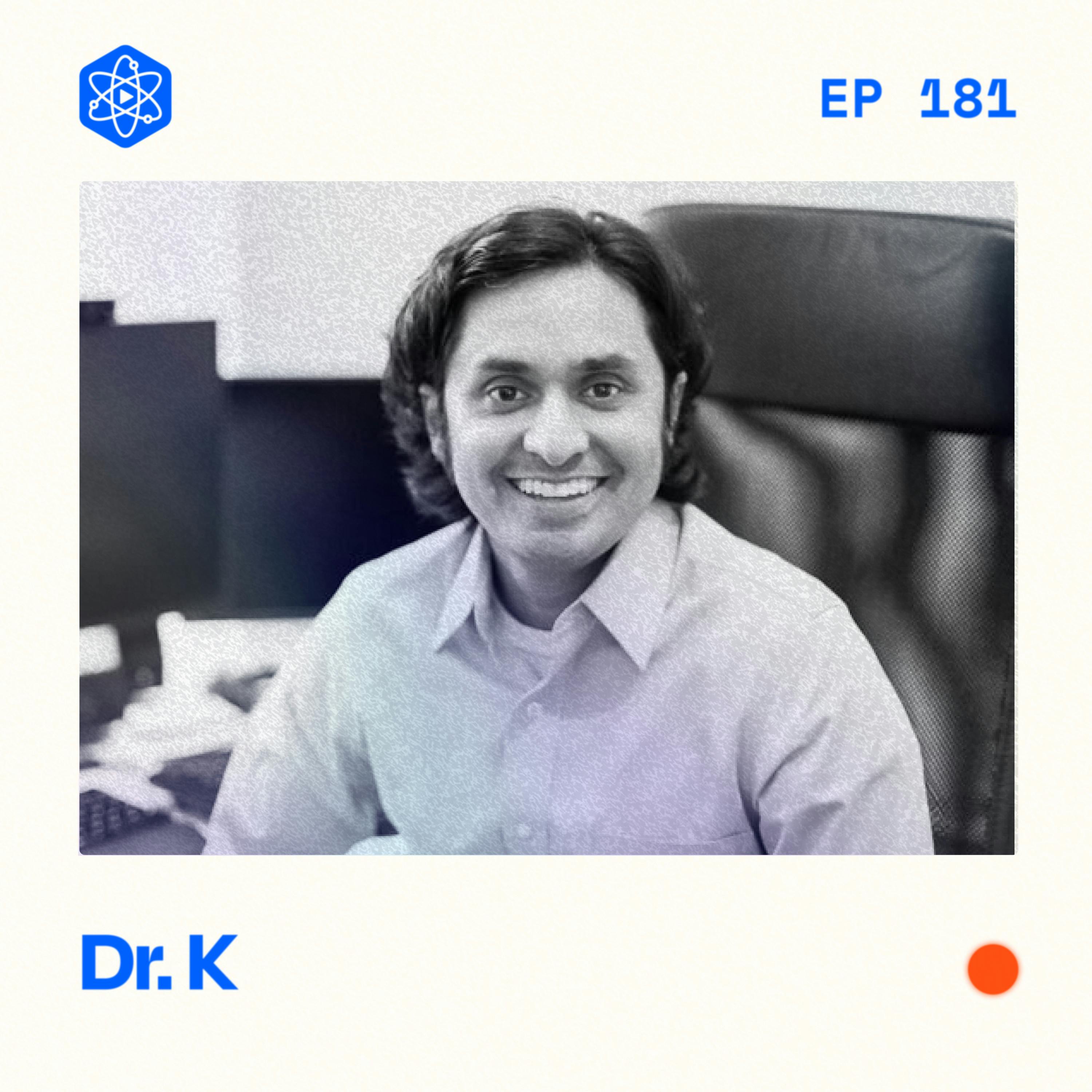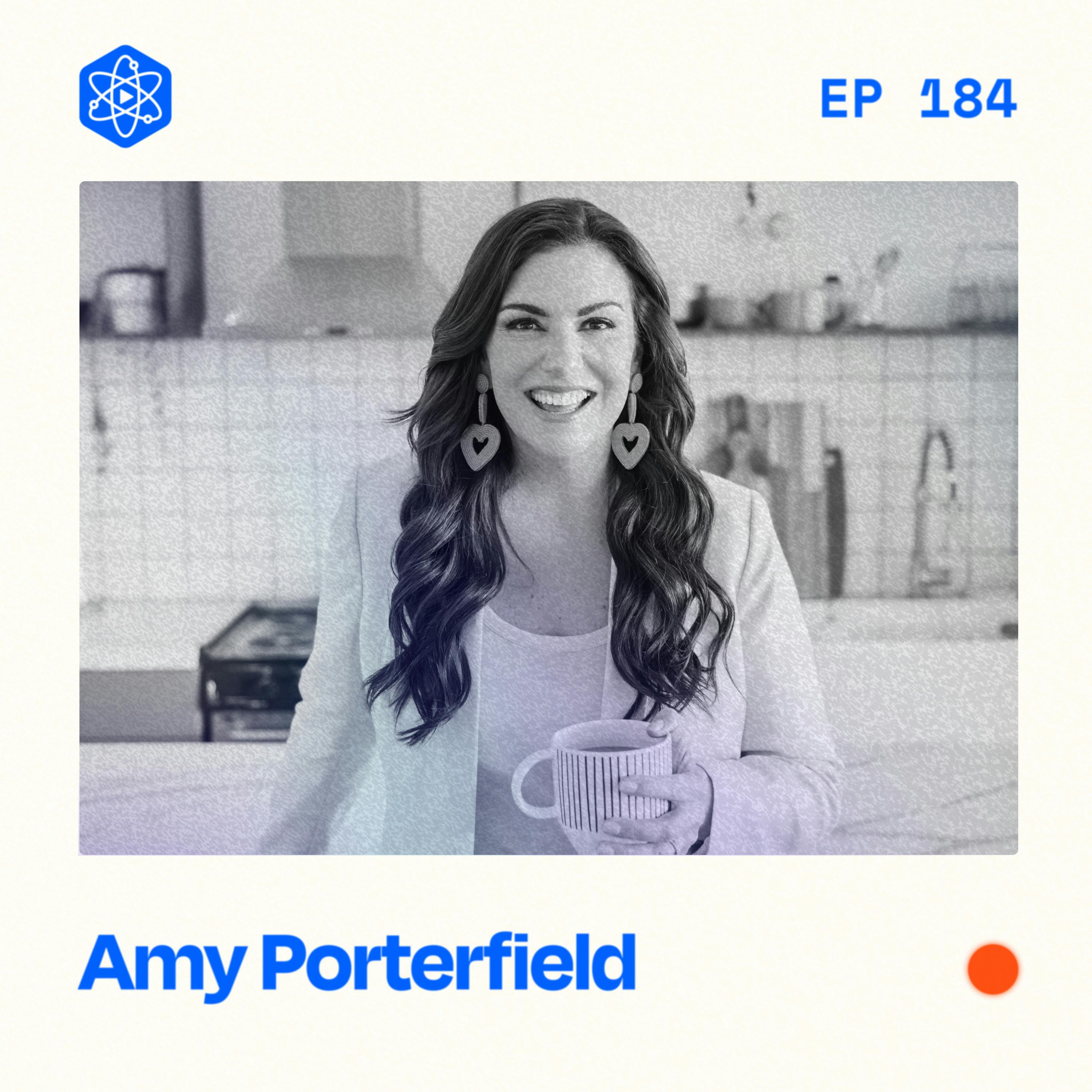Ed Lawrence is the creator of the YouTube channel Film Booth, which helps YouTubers grow their channels
WATCH
▶️ Watch this episode on YouTube
***
EPISODE DESCRIPTION
Ed Lawrence is the creator of the YouTube channel Film Booth, which helps YouTubers grow their channels.
But Ed approaches his videos differently than your typical YouTuber. He’s found a way to make education entertaining.
He's the answer to the question, what if learning wasn't boring?
So in this episode, you’ll learn:
- How to use story as a teaching device
- How bingeable videos can turn first-time watchers into loyal fans
- Ed’s production process
- How to make your boring ideas sexy
Full transcript and show notes
Ed's Website
Follow Ed on YouTube / Twitter
***
TIMESTAMPS
(00:00) The Most Entertaining Educator on YouTube
(00:44) How to Make Your Ideas Interesting
(07:19) Packaging Comes First
(08:39) Intros and Clickbait
(13:48) Using Story in Your Videos
(17:34) Using Metaphors
(19:10) Assuming Audience Knowledge
(21:31) Bingeable Content Builds Community
(24:06) Film Booth Production Process
(28:34) When is a Story Too Long?
(31:18) How to End a Video
***
RECOMMENDED NEXT EPISODE
***
WHEN YOU'RE READY
🚀 Get CreatorHQ (creator operating system)
🧪 Join The Lab (private membership community)
***
CONNECT
***
SPONSORS
💼 View all sponsors and offers
***
SAY THANKS
Jay Clouse [00:00:00]:
The only thing you have to do on YouTube is to make people interested in something. Nothing else. That is literally it. That's Ed Lawrence. You might know Ed from his YouTube channel film booth where he helps YouTubers level up their channel. But the thing is, Ed approaches teaching differently. He's the answer to the question, what if learning wasn't boring? I say it like this. It's like when you're a kid and you don't want to eat vegetables, your mom would mash up a ton of broccoli and put it in your burger. It's the same thing. You gotta give them a burger and put some broccoli in it. So in this episode, you'll learn how to use story as a teaching device, how bingeable videos can take first time watchers to loyal fans, Ed's production process, and how to make your boring ideas sexy. You said part of the process for you making a video is that straightaway, you basically acknowledge that your idea is not interesting. And I felt personally attacked by that. And I wanna hear you talk about why that's an important part of the the creation process. I realized a long time ago
Ed Lawrence [00:01:02]:
that the only thing you have to do on YouTube is to make people interested in something and keep them interested. Nothing else. That is literally it. And the problem we have is we come up with an idea, and we naturally think it's good. And it might be, but it doesn't mean it's interesting. So it's our jobs as YouTubers to stop and throw as many possible objections as we can at I idea and say that's boring. That word in that title is boring. Our viewers don't care about that word and that title. Boring. So let me give you an idea. I made a video about mister who's the boss and Marques Brownlee. And I started off my process with I want to talk to YouTubers about how to present. That is the most boring thing I can possibly talk about. There isn't a YouTuber in the world who wakes up in the morning and goes, I need to learn how to present. I've I've got a I've got they wake up in the morning, and they go, my channel ain't growing. The hell's wrong, and they get upset. So straightaway, boring. I'm like, right. I need to talk about it. It's massive. How do I make it more interesting? So I throw what I called idea presentation round. Do I make a video called 5 tips to present? Do I make a video called 5 mistakes you make that will wreck your channel and just hide it in there? Do I make a video called I taught strangers how to present, have a thumbnail on the street where I, like, know a Kagan style? Or do I make a video called the secrets Marques Brownlee used? To present or something on those lines. So I pick a pathway, a story, and I'm like, well, how to present? It's boring, and I'm never gonna get many views on that. I wouldn't search, but I don't wanna wait 6 months to get views. So then I'd be like, okay. The mistakes 1? Yeah. I've done a few of them. I could do guys it and not tell people it's about presenting, but maybe I wanna harness social hacking. So I'm like, whose story can I tell? Who got over presenting? That's the winner. Let's get a famous YouTuber in the thumbnail who's way more clickable than me and tell their story. Because the cool thing about this is I know that most of the biggest YouTubers in the world their first video still. So all I have to do is raid their channel, and I can show the progression. And then I know my viewers don't care about presenting they they they care about growing a channel. So all I need to do is tie in the sub growth to their presenting and be, look, and say, look how big a part the presenting played in the thing that you actually care about. That's why you need to care and get good at this. Suddenly, a really boring idea has become actually very interesting because they understand why it matters, and they're watching people who they admire overcome exactly the same problem they have, and that becomes an interesting idea. And if you do not take your videos through that, they will be boring
Jay Clouse [00:03:35]:
as far as I can send. And when you talk about interests, I think I think in a an assumption inside of that idea is that our goal as YouTubers is to get more views, more audience,
Ed Lawrence [00:03:49]:
typically from people that we may have not reached before. And that's why it needs to be interesting. Is that right? Yes and no. So my goal as you choose isn't to get more views. It's to build a community of viewers. Who come back. The biggest problem is everyone right now is chasing these, especially in the finance niche. They wanna do side hustle and passive income videos because that's where their views are. And I'm like, that's where the that's where the views are. But when that trend goes, you won't be left with any viewers, so I'm thinking long term. That's the first thing is that what's interesting to the viewers, and that sometimes means not going after the big views for someone like me. Now I'm a business. The end of the day that the ultimate goal is not views. It's to grow a business in the community. So I'd probably think about that first than just say it's all about views. And then it's a game of thinking, how do I make something interesting to those viewers? And sometimes we go a little bit wider. So that video I just spoke to you about, the whole point of that was to go wider I wrote the entire script so that my grand or a kid can understand it, barely related it back to even making a YouTube video It's just a story that I thought a lot of people would enjoy, and that worked. Was it the best thing for my business? Maybe not. In fact, the next video I put out, which was tailored way more to my viewers, got absolutely hammered because it was so unrelated to the new audience I built. And, actually, I didn't wanna cater for that much because I brought in too many mister who's the boss fans. So that was the first part. I forgot what the second thing you asked me was. Well, let's let's keep going down this train. Tell me some other ways that you crusher test your ideas to make them more interesting. First things first is just a lot of trial and error. Like, you make videos and they don't do very well. And then you're like, you beat yourself up, and you're like, why didn't that work? And 6 months later, you look back and go, you idiot. Course, it didn't work. You can change the thumbnail and bring that thing back to life. But, usually, I come up with an idea, and then I'm like, how the hell do I make this more interesting? I need to wrap it up in a more interesting way, a story of some kind, And then I will mainly focus on the packaging. So I don't go any further until I come up with the packaging from their title. So you have to have feedback on YouTube. It's just you cannot do this on your own. So feedback is a really important part. So I have someone I do weekly feedback with, and then I put it into my Discord, and I have 2 different Discords. 3, from different services that I have, and I ask my students who are my avatars, which 1 you click in on. And it's always the 1 I didn't think So I've got 3 different packaging styles, and I lead with that 1. And sometimes they're right and sometimes I'm right. So I'll flip it when I release it. And then I learn, and I'm like, right. That word got more of a response. That graph, you know, saved the video from flopping. It is really just a big game of feedback YouTube, and I don't think people realize you should not be doing this on your own. You need feedback on your writing, editing, thumbnails. And, ideally, the more of that you get, the better you'll get. That is kind of how I would stress test it. But, really, the first few hours of a video when you release it, you can learn a lot about your community by looking at the amount of impressions you get. So if I'm looking at it and my impressions are down, don't really pay too much attention to the click through because impressions is what matters. In click for rate will go low. But if impressions are high, that's what we want. If impressions aren't what I want, you know, or change a thumbnail, and I'll quickly learn, okay, the community reacted to that. In fact, the video I've got up right now did rubbish. I'll spit out the thumbnail, put 1 word in it, it's now starting to move a lot quicker. So another way to kinda stress testing is when you're actually in the game. But as a small new channel, it's not really possible to do that. As you get bigger, you get a few more luxuries that you can play with. When you are doing this testing of the packaging with your community, with the people around you, Have you started scripting yet at that point, or do you script once you've settled on a package? Just don't do anything. You have to have the there's no point wasting my time on a video until I have packaged it. Because if we go back to the example I used, how to present a YouTube video. The title that I came up with was the silent hack YouTubers used to hook you. Now I have that. I have to write an introduction that undoes the clickbait, sets up the value the viewer's gonna get, makes them understand why this is an important story. I started with how to present the video, I'm stuck with okay. Now I'm gonna share how to present the video, and I can't possibly use another title or thumbnail that isn't related. This boring introduction. So you've gotta do your thumbnail and title first because it is now our job as and, honestly, believe this, it is no longer about making videos YouTube. It's who can come up with the most interesting idea from the title, and then how do you sandwich a video into that idea? And if you think like that, it changes the game.
Jay Clouse [00:08:19]:
Yeah. I've been I've been a little resistant to that because it's so counter to how I've created content in the past outside of video. But I'm realizing that that is absolutely like the best way to put it. Like, you have to you compete on the packaging And then it's like, now how do I construct a video that satisfies that package in the viewer who clicked on it? Yeah. You said something really interesting, which was You need to script an intro that undoes the clickbait.
Ed Lawrence [00:08:46]:
Help me unpack that. Let's say, for example, I know for a fact if I make a video about lighting. No one's clicking on that. But let's say, right. I've got again, they gotta all understand this stuff. You know? It's it's so I gotta give them what they want and then deliver what they need. So I'd call it something like the number 1 mistake destroying your video's growth, you know, your video views. And then I write an introduction that's like, it tells a short story. And it's like, a few years ago, I had 10000 subscribers, and I made 1 change to my system and my channel skyrocketed to quarter of a million. In this video, I'm gonna show you what that change was and how to use it too, and all you need is a light. Suddenly, I set up the value and the reason they need to care about lighting, and then I've put it up against the result they care about too. So they're like, I'm willing to listen to that. It might not feel like the thing they necessarily clicked on too much, but how am I gonna get them to watch a video about lighting? Because a lot of people, me included, who's using an awful lot right now, it's quite it's very harsh, underrated the value of light for a very long time time. And, actually, I was a fool. I should have learned about it. I just never had that deep desire to click on it because I just really didn't know why. And if someone paired it against something I cared about, then either clicks on it. So it's given them what they want and then delivering them what they need and making sure your introduction makes people understand the reason why what you're about to say is so important to them. They probably would have never clicked on it in the first place.
Jay Clouse [00:10:12]:
Yeah. It's it's this it's this tension that I often feel of, okay. We have this package that we think is compelling. But we've really dialed up the inherent idea to, like, a 12, you know, where it's like, yes, this this title is kind of true, but it's like an extreme version of the truth. And I almost feel bad that I'm making it seamless so extreme And you you then once, like, resolve that tension and guilt you're feeling early on in the video. But I wonder, like, how early is too early to undo the clickbait? And does that, like, hit a payoff too quickly or people say, okay. I get what you're going for now and and we're gonna stop watching. No. So you won't you won't pay anything off. You just
Ed Lawrence [00:10:53]:
introduce them to this idea and how and connect it with the title, the title. So click click bait, really, at the end of the day is you make a video. The video is not about. If you make a title, it's not particularly giving away the nitty gritty details. The viewer has an expectation. Of what they think the view is about. But you can play with that expectation, and you can put a compelling argument together that makes you go, oh, stick around and watch it. And I totally agree. I absolutely hated the idea of doing this. And I've spoken to some other big YouTubers who've been around for years, and they're like, my channel's losing traction. It used to be the biggest in the niche. And I said, you could just do it. You've gotta take this method. And they did it, and they messaged me, and they were like, we've had 5 1 out of tens in a row. Not 1 person has commented on our title from that. And I looked, and I went, they don't even look like clickbait. It just looked like interesting titles. And, also, you know, for those of you who are alive during the newspaper eras, newspaper headlines are outrageous. There was 1 in the UK. It was called Freddy Star 8 My Hands star. And all he did was put a hamster in his mouth, and it's a famous headline because it was outrageous. It got people to buy the paper. So, you know, as educators, really, it's our job to make things more interesting. III say it like this. It's like when you're a kid and you don't wanna eat vegetables, your mom would mash up a ton of broccoli and put it in your burger. It's the same thing. You gotta give them a burger and put some broccoli in it.
Jay Clouse [00:12:14]:
After a quick break, Ed and I talk about how to use story as a device to move a video forward. So stick around, and we'll be right back. And now, back to my conversation with Ed Lawrence. So if I am somebody who's Getting started on YouTube or maybe I'm already making videos, and I feel good about the information that I want to transmit to somebody. What are the first steps that I take so that I can actually use story as a device to make that information more interesting?
Ed Lawrence [00:12:41]:
I think the first thing is don't try and bite off a massive video that tells a story from start to finish. So the video essay guys are really good at this, but it can get overwhelming. The easiest thing to do is just to use a story to make a point it's just engaging. So for example, if you make a video called 5 mistakes that ruin your cooking, Most people, they jump in and they say, mistake number 1, don't put too much salt in your soup. And the viewers like, oh, thanks. I don't need any more information. You literally do not need to say anything else. They're like, oh, because salt will ruin the taste and cause an an overload of sulfur. Right? It's boring. Whereas if you turn around and you said, K. This first mistake takes you back to the time I cooked for queen Elizabeth. I spent hours preparing. Everything was caught up perfectly. And they took it. They took the bowl of soup to her table. She sat down, and she said, this is delicious, dear. It's a shame there's so much salt in it. And that was the time I realized that you just never wanna put too much salt in your soup. So always put slightly less than you think you need. Point. Done. Way more interesting. Right? And you have probably, when I told you that -- And if we use that word interest again, which hopefully isn't offending you too now. Right? Is -- I thought you were interested. I'm good now. I'm good now. No. III wasn't personally attacking you or anyone. So but if we use the word interesting here, right, the reason a story is interesting is because when you listen to 1, something happened. So when I told you that story, as long as you're paying attention, in your head, you suddenly saw someone walking up to the queen with a bowl of soup, and you imagined the table, the plates, the room, maybe what she was wearing. And then you imagined her you were in the story. It's not a passive experience. So I invited you to use your brain, and that is what makes it so much more interesting than just saying don't put salt in the soup because the viewer became part of it. They got to fill in the gaps. So that's the first place to start. It's like, how can I tell a little story? The second place, Alex Formosi is the master of this, is just have a story, your own story. The thing you overcame that the viewers want, you know so Alex von Moises' story is don't know how ever dramatized it is, but he tells it listen to any podcast he's on. He tells the same flipping story every time. So powerful. So, like, you know, I was locked down to my last dollar, tons of staff not making any money, and I had to make a hundred grand in 24 hours. And then he tells his story where he, like, broke up with his wife or his girlfriend back then, and she had to go to a conference and land tons of sales in order to land this business. And even though she was hating him in that moment, she did it. And you're just like, ugh, this is such a powerful story. Like, what an amazing woman, what an amazing guy, and you get so pulled into it. But he he has the result, and he talks about challenges that you as a business owner will have too. You start to relate, and I'm imagining his wife at this conference landing deals. It's so engaging. So you, Jay, as a business owner, you know, you've got your core, like, membership offering. Right? You can talk about something that in your life, you had to overcome where community of people really pulled you through. And at the end of that story, the main payoff is that is the moment I realized that no business owner should ever go alone. You have to stick together and pull your information and your advice. Otherwise, you're just not gonna ever get anywhere that fast. That's the first thing. It's like, what is your story that you can lean into? You don't have to tell it in a whole video, but you can use examples of it. And then you can, like, use other people's stories as well or you could make 1 up like a little skip or something like that. But it's kinda like the starting point. Let's talk about metaphors a little bit. I had that on my list as something to talk about, but I wasn't sure how to step into So you talk about metaphors a lot. You use metaphors a lot. Why are metaphors 1 of your favorite tools? So let's go back to this idea of how do I make videos that keep an expert happy and a beginner happy? And, really, what you have to do is you have to take information that's complex and make it understandable so anyone can enjoy it. In a way where the expert goes, I know that, but, damn, that was smart. And the beginner goes, wow. I finally understand this. So a metaphor is when you just you can just take a bottle, you know, and a problem that's complex and relate it to drinking out of a bottle. So I've done some before. I used a metaphor of not having enough time to run a business, a YouTube channel, you know, see your friends, family. And I was like, how can I possibly visually show this is a problem so people can see you don't have enough hours in the day? Because I can say that my problem was she didn't have enough time. But I get a cup when I fill it with water and then loads of other cups and say, this cup here is her business. This is her friends. This is her family. And then when it gets to the YouTube channel, the cups dry. You visually understand the problem, and it just sinks in. And, again, you you're thinking as a viewer, and that's the key to educational content is, like, make them think because then they're listening, then they're learning. So metaphors just allow the viewer to feel smart. They allow them to understand things, and they allow them to relate to everyday items that are really easy to grasp. And I think pretty much every time I'm trying to explain something, I think, how can I come up with a metaphor for this? Or how can I find a story? If I don't use either of those, I've been lazy.
Jay Clouse [00:17:48]:
I wanna pull in a couple threads here. 1 of them being this idea of if you write to a viewer who you kinda presume has seen a video before, that's, like, the default of how I wanna create content generally. But I always have this voice on the back of my head like, hey. You can't reference this idea that's in a past video or a past newsletter or past essay. Because you don't know that the viewer is watching that. You're gonna lose them. Like, I'm still in the mindset. If I want things to grow farther, go farther than they already are in terms of views, So help me help me understand, like, how how much presumed knowledge should I put
Ed Lawrence [00:18:26]:
in these videos for somebody who is probably new to my channel. So the the knowledge thing is tough because as a general educator, how can we possibly know they know and don't know. And, actually, if we start talking about stuff, they know they're bored. And if we go too deep, they're off. That's where story comes in. We don't have to give too much. We can keep everyone entertained and happy. So when I write for my viewers, I'm not writing so that they have to have seen previous videos to understand it. I'm using humor that I know they'll enjoy. I might do a reference to an old video. I might use a style they've once to enjoy. So it's not about the the cold view still needs to watch it and get it. Every now and then, I might throw in an in joke. It's quick. It's like, boom. They're not gonna know it. But I don't wanna feel the you know, I I always think of YouTube as the playground, and there's the cool kids standing in the center chain, and you're on the outside. And what you wanna do is you wanna be welcoming the cold viewers, you don't want them to make them feel like they're not part of the gang. So if you go too deep on a tangent, you know, it can be counterproductive. But at the same time, it's like comedy. Right? They have ongoing gags that run throughout series, and you can bring them in without making anyone put off. But at the same time, every video I make has a goal, and it's often not get lots of new viewers. It often might be bringing people back to the channel or it might be like, oh, let's try and get people science to email, but it it's not necessarily about new. You know? If you keep writing for the new, you can often start playing it too safe. It gets a bit boring. So you kinda gotta make a decision here. I totally agree with what you've said, though. You do need to be careful, but I also wanna have enough personality and fun
Jay Clouse [00:20:05]:
with the regular viewers who come back. Because at the end of the day, that's what it's all about. It's all about those guys to me. You've been talking about your community lately and how you're trying to build a community around this. And I'd love to hear how you think about that in a YouTube setting where you get so many, like, first time viewers, maybe just 1 time viewers. So how do you think about nurturing a first time viewer into being someone that's like, yeah. I like Ed stuff. Maybe I'll subscribe, but I'll at least continue to watch when it pops up in my in my recommended area.
Ed Lawrence [00:20:34]:
If I'm honest, it's making videos that are bingeable if you can make videos where people laugh, smile, learn something, and they get to the end and they click another 1, they will become part of your community. Now they're either gonna do 2 things. They're gonna click off straight away and go, no. Thank you. Hate this guy, or they're gonna go, yes, please. So if I look at my end screen retention rates, I have these end screens in my video. I'm always setting up the problem people still have. The retentions usually between 70 or 80 percent of the next video. In fact, all of my end screen retentions are high. So my whole channel is designed. It's gonna be fun. It's not supposed to be too much hard work. It's supposed to make but I wanna actually wanna watch another 1, and supposed to kinda divide in terms of stuff that do weird stuff. I have, you know, just opinions people not agree with. You love it or hate it, but those love it. They come in. They watch the stuff, and then they'll come back, hopefully. But, you know, at the same time, YouTube is most people quit. Most of my audience who subscribed probably never made a video or or a lot of them have quit. Right? So I can't stop that. So for me, it's like, make the content entertainer, make it engaging. And then I like to you know, my email list is my next thing. So that's where I'm building a way more refined community. So that's that's slightly it. I'm gonna do a weekly update. I put a lot of effort into it. And every week, I wanna I wanna make the best email about YouTube there is. And I wanna bring people in, and I want them to get excited when the message comes in. And then I help to nurture that community in there as well. And, also, on Twitter, I think Twitter is fantastic. Again, the same with threads I wanna be putting out as much effort into my Twitter as my YouTube because there's a different community on Twitter who don't watch my content. And they all come together in 1 place. But I'm really focused on new is great, but I make videos most of the time for someone who's watched a few. Really boring making it for a new viewer because you have to play it safe. If I can write to someone who's watched 5 or 6 of my videos, That's so much fun. And I feel like I'm writing and talking to a friend. So it's it's it's kinda treating them with respect, wanting them to have a good time always, wanting them to come back on what the content and then wanting to can deliver a high experience, and you'll just find that if you do that, people trust you, and they they grow to like you and That's how I've been doing it anyway.
Jay Clouse [00:22:45]:
When we come back, Ed and I dig into the specifics of his video production process. So don't go anywhere. We'll be right back. And now, please enjoy the rest of my conversation with Ed Lawrence. Can you help me understand your timelines a little bit? Like, how much time do you usually spend in the packaging phase versus scripting versus recording versus editing? 70 percent of my time is probably planning. 20 percent, it's probably editing.
Ed Lawrence [00:23:12]:
Tiny bit filming. Okay. The thing you need to spend the time on if you wanna get results on YouTube is the planning. Is it making the idea interesting, the packaging, the thumbnail, the title, the introduction, the end, then the middle, then write the thing, then film it. All of that information is where the growth is for the majority of people because or well, people I work with in terms of educators. You know? If if you're doing a a vlog style thing. You kinda gotta know the point of it, and I still think you should try and work out the packaging before and get rough idea, but a lot of that writing would kinda be done in the editing potentially or afterwards. Yeah. If I spend 70 percent of my time planning a video and writing it and doing the fun and title, I'd be way more confident that would get more views than a video I spent 50, 25 percent on. It's timing's everything.
Jay Clouse [00:24:00]:
How long do you spend producing an entire video And so I'm trying to think, like, through the scripting part
Ed Lawrence [00:24:06]:
specifically. Because scripting is where I'm personally getting stuck a lot of times right now, and so I wanna know how long you're spending on that, what the process looks like. So the thing that always takes me the time is how do I come up with an idea? So I have, like, tried and tested funnels and titles. I just repeat, but I'm kinda creative. I like to try new things. Stupid, such as just repeat what worked if you type really. And if you repeat what works, you know, you come up with a title and just make, like, no Kagan does just makes it slightly different each time. You know, it saves a lot of headache. So that's 1 way of speeding this up. But writing is different. So going back to what we were saying at writing to my audience, I wrote a video the other day that was bonkers over the top just smashed it out very quick. Easy. Because I wasn't constantly going, how am I gonna cater for the cold audience? How am I I was like, I don't care about their just wanna make my return viewers enjoy something. So that was pretty easy. I blocked 2 hours a day off for writing, and sometimes I didn't write anything. I just think So it is very different for each script and who I'm writing for. If I'm writing for the cold audience as a nightmare, it takes ages, and they particularly enjoy it. Because I'm always thinking, do they understand that? You know, is that too clear? Is that gonna annoy him? The edit takes a long time. And, actually, my editing will take a massive long time. So let's say 75 percent in the planning is probably not fair because the edit is a beast in mind. So say 50 50. But I do wanna emphasize for most people who don't edit on the same scale as me, it should be much more than if it's only take you know, it's taking 3 hours to edit. I still think you wanna be thinking about spending longer planning think whatever you're doing, you know, these things ideas and writing and stuff can come quick, but it you know, if you throw objections at everything you do all the time, it's gonna take longer, but you're gonna start realizing, okay. It's not interesting to my That's boring to per audience. How can we make this more interesting? How can we put a metaphor in here? How can we put a story in here? And that's what we'll then add on the time, but it's definitely the right way of thinking. I know I'm really getting into the weeds here and being a little invasive, but I'm gonna hang out here for a little bit longer. So when you're when you're writing this,
Jay Clouse [00:26:06]:
do you do you write like a version that is information first and then come back to sprinkle in story and metaphor? Or do you write linearly, like, I'm adding in story and metaphor while I'm exploring the entire, you know, arc of the video.
Ed Lawrence [00:26:24]:
I try and plan it as much as I can. The problem is sometimes when you plan the creative juices don't flow so much. So a lot of the time I'll start writing. And then I'm like, what I call the creativity round where I go, this is boring. This is boring. This is boring. This is boring. Make it interesting. Ugh. How am I gonna do that? But some videos, I set with the goal of turning the whole thing into a metaphor from start to finish. And that means every single second, tie back into the metaphor. We're making 5 points. I did 1 which is about cleaning a car that I had to drive to my friend's wedding. And along the way, I used every point of the car cleaning process and the driving process to relate to YouTube to teach people about retentions on. Which is the challenge. Because half of it was the story of me trying to get to a wedding. The other half is me. Writing education. Right? This is kinda weird. It goes back to that thing. I just always tell myself it's boring, and it's harsh. You get used to telling yourself you're boring. It's fantastic at the same time because you put the time into the right place to make it that little bit more engaging. And for me, I think that makes a big difference.
Jay Clouse [00:27:26]:
How do you know when a story is dragging on too much? You know, you you can have a video where you have, like, stories within the videos, several of them. How do you know, like, when you're dragging out a story too much and the point was made earlier on? Yeah. Okay. This is a really common problem. So you, as a writer,
Ed Lawrence [00:27:47]:
you have to understand your viewers have a brain. Video is amazing because it has footage, text, animation. So in a second, I can get across a point far quick, you know, far quicker than you can write. What you need to ask yourself is this next sentence, do I need it? Or if I put a bit of text and some b roll on the previous sentence, would the viewer watch that and fill in that gap and mean that sentence no longer relevant? And if the answer is yes without that becoming confusing or overwhelming, you can delete it. It's kinda it. That's kinda what we have to trust is that, actually, you know, we don't always have to give them every min minuscule detail because they work it out for themselves a lot of the time. It's tough because, like, I want to believe viewers are smart. But also -- I know. -- I I've I've also heard you say, like, being more general sometimes and not assuming knowledge. I mean, assuming knowledge and being smart is 2 separate things, I suppose. Yeah. Knowledge is something you gain intelligence is something that is, like, your ability to understand and grasp some things. So when I say assume this mark, is you have to give enough information to make them understand it, but we need to look at it and go, have I given them enough here in a way that they can easily understand? And that's what I'm saying. Like, putting a bit of saying a sentence and then adding a bit of text on stream, it doesn't necessarily say exactly what it is, but maybe fills in a gap or just showing the visuals So let me give you an example. Right? I use this as an example a lot. Video 1. Jay, you're now my girlfriend. Okay? Jay, this is what happens in video 1. Jay is not working. We need to break up. Okay? And you're like, oh, sad. Brian, don't worry, Jay. Okay. Video 2, I didn't say a word. I just slide I the camera looks at my face, and I've got this look on it. And I slide my keys across the table and I just look at her and shrug. I have just told the entire story without saying a word. So when you put that on top of the things that you're saying in a video, the viewer picks up on all this stuff, and that often means that if I'd gone on to add more detail, it would've got boring to them because they got it. So you have to, you know, obviously, use your common sense and go, is there enough here to understand it? The key thing is have we given them enough and then move on? I edit my scripts heavily, and then I usually cut 2 minutes at least out of every video in the edit
Jay Clouse [00:30:06]:
because I'm like, you know what? They didn't need time, so I think they'll get it. They'll get it. You said a couple times that you you spend a lot of time on the intro, which doesn't surprise me. But you've also mentioned that you spend a lot of time on the ending. I haven't heard a lot of people talk about the ending. I've heard a lot of people talk about the intro because a lot of people optimize for retention, and they say if you can prevent the big dip in the beginning, then that's gonna carry through at the end of the video. But I haven't heard a lot of people talk about the endings. So how do you think about endings to your video? People who know my channel are gonna think right now I'm talking about the end screen where I point and say, watch this video next. I'm not. That takes 2 seconds. I'm talking about the end of the story.
Ed Lawrence [00:30:38]:
So let me give you an example. If you were watching a film and you were absolutely loving it, and I was watching it with you. And I stood up, and I turned off the TV. 3 quarters of the way through. You would say, oy. What are you doing? And I say, why'd you care? And you went, I wanna know what happens. Oh, okay. I'll put it back on. So if we want to know what happens, and this is the ultimate thing for watch time, people need to know what happens, we need to make sure the ending is planned before the middle because the whole goal is to drive people to the ending. So if I've found my intro, I need to set something up. The view wants to get to the ends to watch. If I leave the ending till last, I potentially write an ending that wasn't, you know, set up in the beginning to keep people sticking around for. I'm always thinking, what's the end? And then I put the bits in the middle. And, really, I mean, when they teach public speaking, they say, thing that people remember from your talk is the beginning and the end. And you could say the same is true for, like, a talking head video, really, because end of the day, if it's just a simple talking head video, you are potentially doing public speaking. So 1 little technique I use, I call the loop, where I do something at the end which happened at the beginning. So we used to do it in our production company with business business videos, and and it's this very satisfying feeling. So you nod back to the joke you made at the start. I did an interview with Joshua Mayer recently. He picks up a candle at the start when he blows it out, and he so he likes it. And I said, look. That candle's pointless. Just trick. Blow it out at the end, and it creates a loop. So if you make a joke or tell a story at the beginning, what you need to do at the end is reference it. So let's use the bowl of soup with the queen example. And at the end of that video, that's where I would loop back to that and be like and after all of that, it turns out My bowl of soup was the 1 that was left in the kitchen, and my boyfriend, Brian's soup, had too much salt in it. You know? And he was like, it's just like a nice little nod. Right? And it creates this feeling of satisfaction And, again, if we wanna make bingeable content, the more we can satisfy someone or make them laugh or make them feel something. Or more importantly, the thing that makes them feel smart. They go, clever. And they feel good about it, the more likely they are to watch another video. And that's when you can maybe hit with an end screen.








